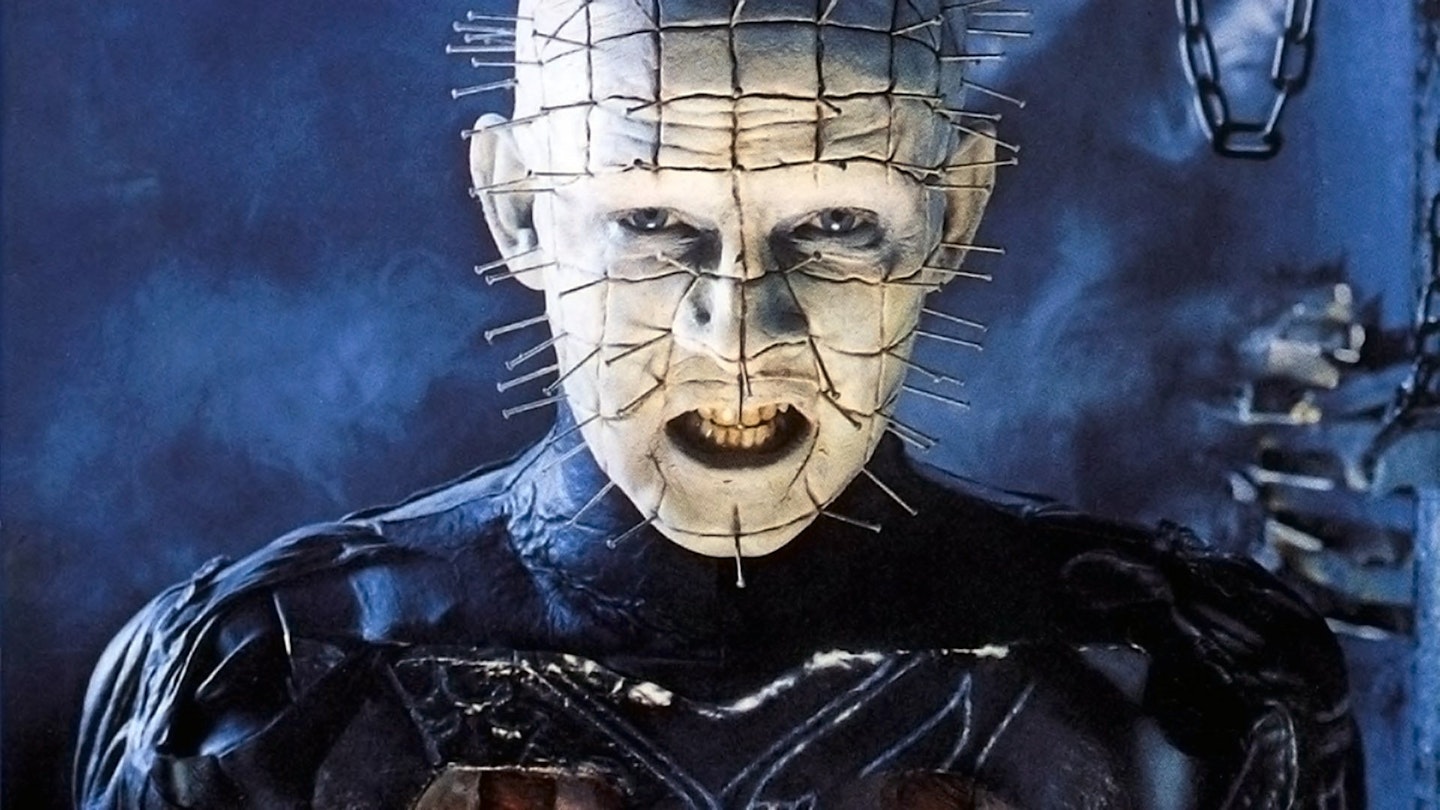Last week marked Clive Barker's return to his signature creation, with a new co-authored Hellraiser comics series published by Boom Studios. While Hellraiser's mostly ignominious sequels have thrashed and moaned in straight-to-DVD purgatory (six of the - so far - nine films never saw a cinema screen), the franchise has a more credible history in comics. Marvel offshoot Epic Comics' 1990s run boasts early work by some surprising contributors, taking Barker's bonkers S&M theology in some intriguing directions. Here are a few examples. What's your pleasure, sir?
*Words and pictures by: *Neil Gaiman and Dave McKean
*Published in: *Hellraiser #20 (1993)
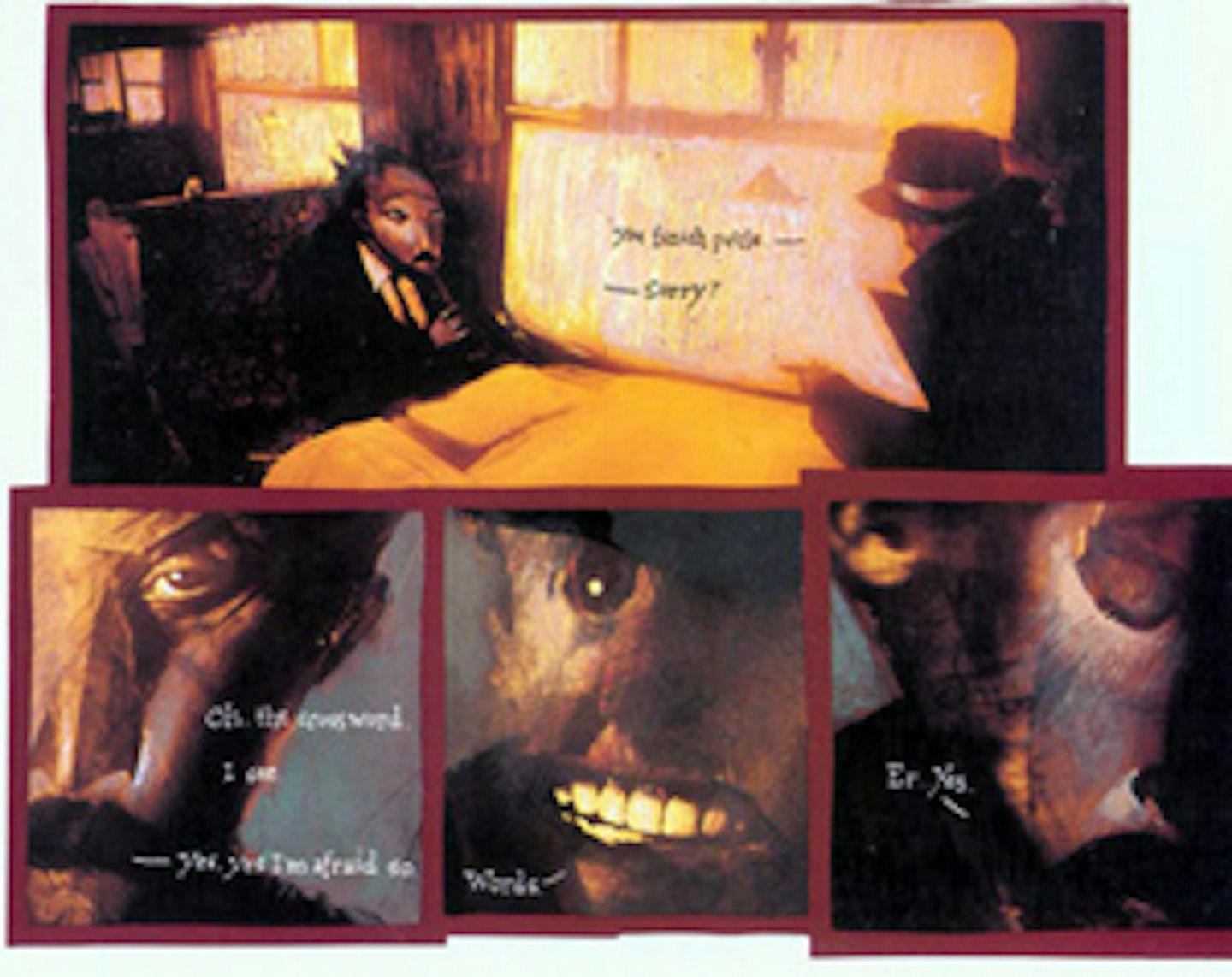
Where better to start than with Hellraiser's landmark twentieth issue? Wordsworth is an early example of the fruitful creative partnership between writer Neil Gaiman and artist Dave McKean, which had by this point already produced Violent Cases, Black Orchid and Signal to Noise, and the beginnings of Sandman, for which McKean provided cover art. Wordsworth showcases both Gaiman's ability to tell a simple story horrifyingly (or a horrifying story simply) and McKean's uniquely unsettling semi-photo collages. Clive Barker was by turns amused and alarmed by the grandiose mythology that others attached to his original tale. Wordsworth demonstrates that none of it is actually necessary. There are no cenobites here, and no puzzlebox. But its story of a librarian who becomes dangerously obsessed with solving a crossword puzzle that requires some quite specific research, is Hellraiser all the same...
Words and pictures by: Larry Wachowski and Miran Kim
Published in: Hellraiser #9 (1991)
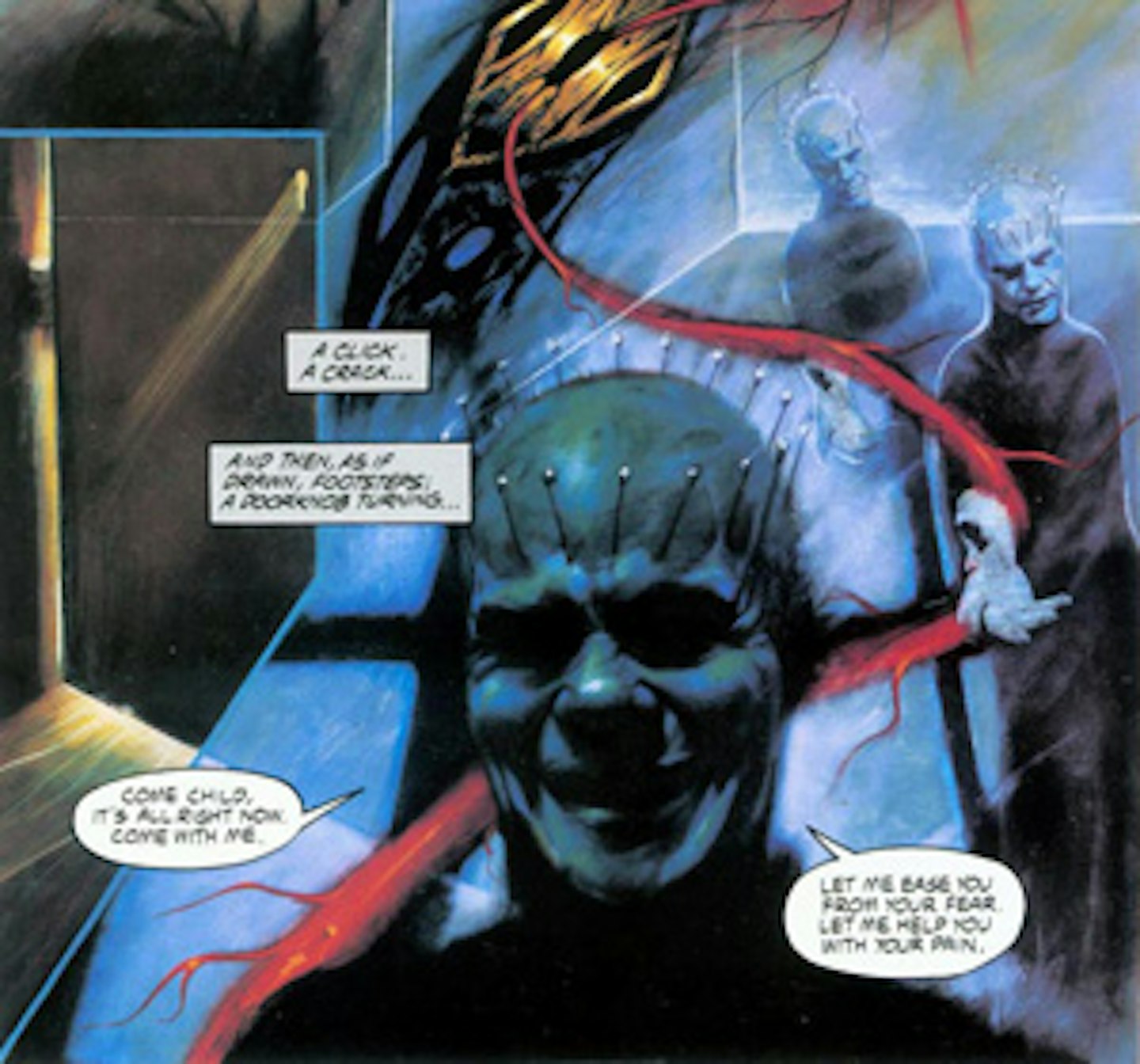
On the other side of the coin to Wordsworth, there are the stories that very much subscribe to the formula that they must involve the puzzlebox, and that it's not Hellraiser if Pinhead doesn't show up (or someone like him). Closets is a good example of over-familiarity not necessarily being a bad thing: you can still improvise around a formula.
The Hellraiser comics were a creative outlet for Larry Wachowski a decade before a little movie called The Matrix. He wrote several other stories for the anthology series, including a holiday special (yes, there was a Hellraiser Holiday Special - it wasn't like the Star Wars one though) and an ambitious three-part political piece based on the cenobites trying to engineer a fascist dictatorship in newly post-Apartheid South Africa. It's mad but it actually sort of works.
Words and pictures by: Ted McKeever
Published in: Hellraiser #1 (1989)
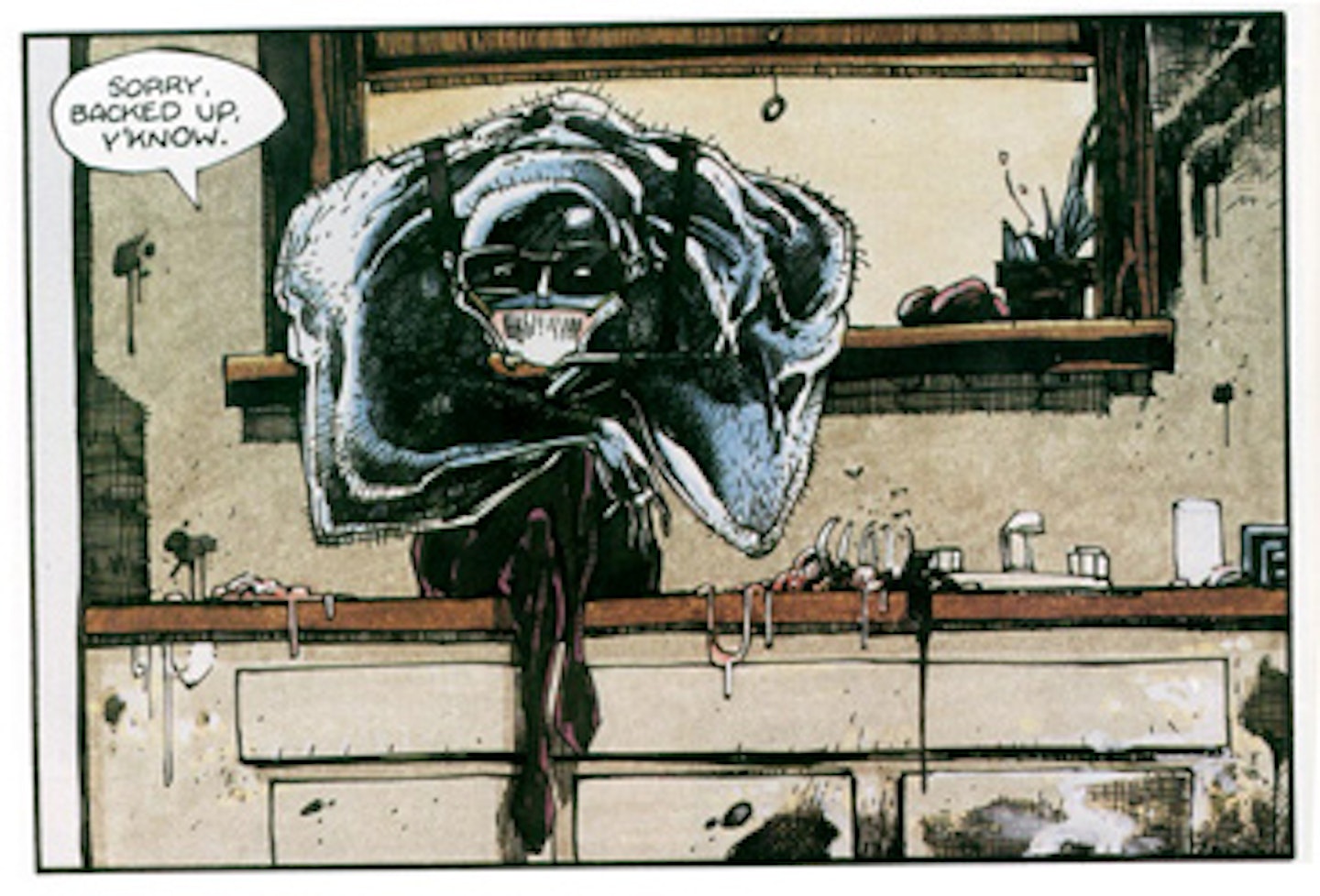
American comics mentalist Ted McKeever kicked off the Hellraiser comics series with this extraordinary entry. A woman comes home to her dull flat from a mundane shopping trip to find a cheery cenobite sitting on her kitchen counter. Said demon agrees to take her away, but encounters a problem when he discovers she's pregnant. There are rules about these things. Funny, sad, ugly and beautiful, it's about as moving as a story about suicide, channelling Fantastic Voyage and 2001: A Space Odyssey, can possibly be.
Words and pictures by: Mike Mignola
Published in: Hellraiser #13 (1991)

Mike Mignola had been working in comics for ten years by the time this typically Faustian Hellraiser story came along, but he was still three years away from the creation that would make his name: the similarly demonic but not quite so twisted Hellboy. Dead Things Rot is another piece that adds a dash of humour to the horror, and features a lordly cenobite that may or may not be Pinhead (this one's actually referred to both as Clown and Winky Dink!). Like much in Hellraiser, its clear moral is that you shouldn't trust a demon with a deal.
Words and pictures by: Jan Strnad and Mark Chiarello
Published in: Hellraiser #4 (1990)
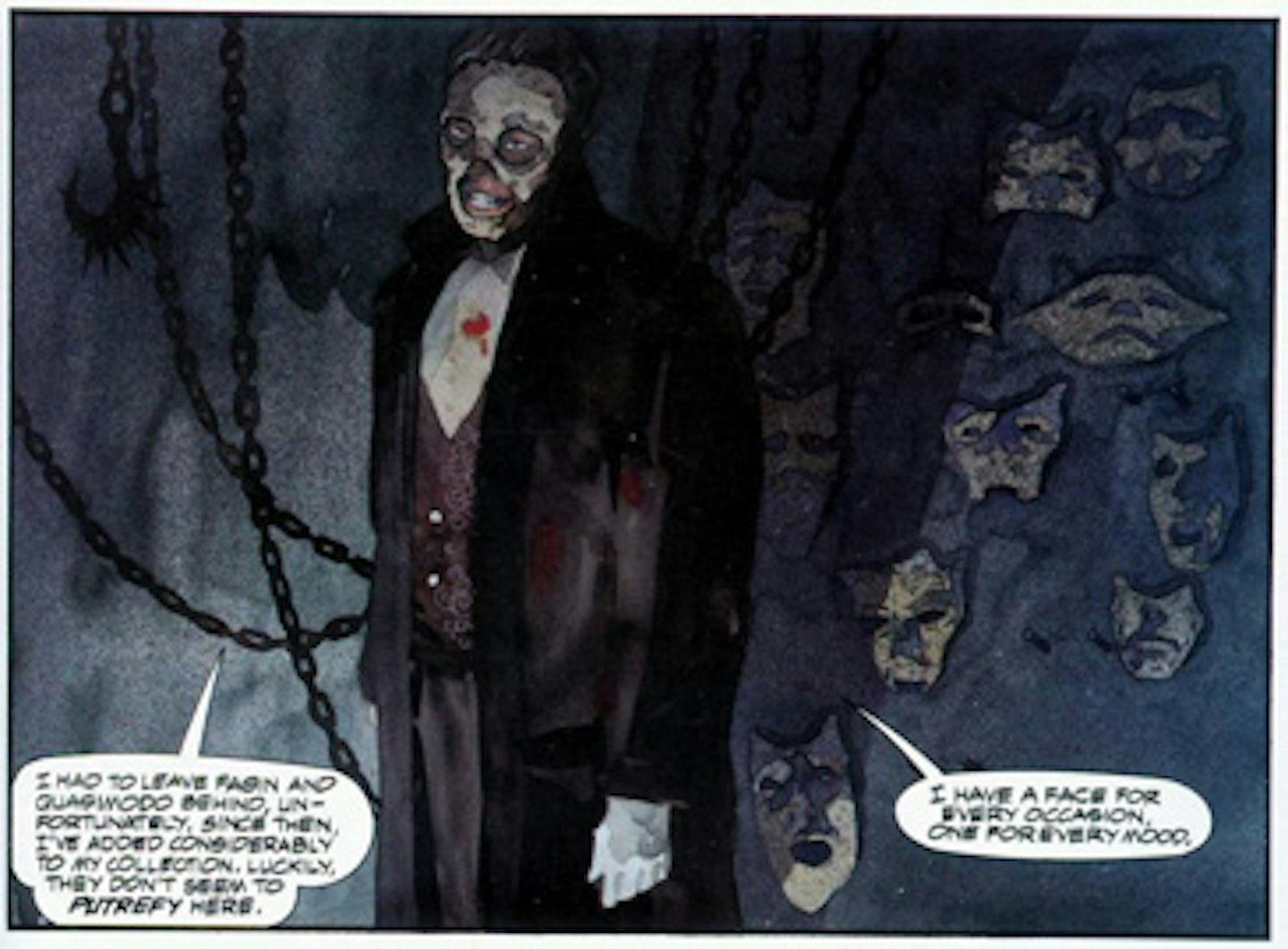
Silent-movie scares for Strnad (later to find a prolific home on Dark Horse's Star Wars comics) and soon-to-be DC editor Chiarello, with the story of a Lon Chaney-alike film actor with an unassailable reputation for being The Man of a Thousand Faces. His dark secret is not make-up, but serial killing: when he needs a new face, he goes out and finds one. Pinhead (it's definitely him this time) is pleased...
Words and pictures by: Scott Hampton
Published in: Hellraiser #9 (1991)
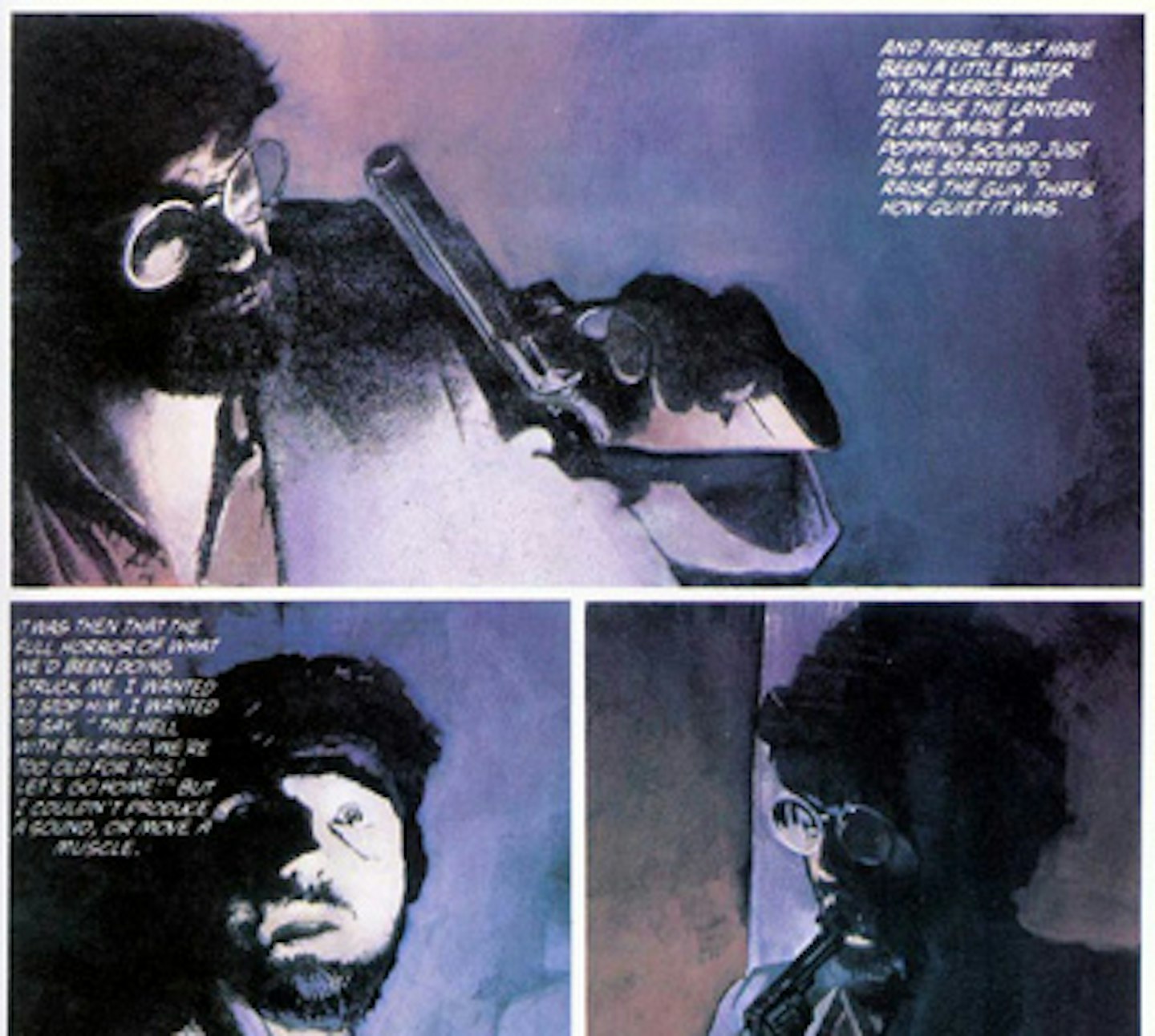
Back to a story with all the feel of a Hellraiser but none of the paraphernalia, from Batman, Sandman and Simon Dark artist Scott Hampton. The Tontine of the title refers to the arrangement between a group of soldiers who survive WWII unscathed and, feeling invincible, take up Russian Roulette. The last man standing when their annual game reaches its logical conclusion some years down the line, gets to claim the pot, but the winner doesn't quite take what he expects, and there's something unusual about that gun... Hampton turned this almost-unbearably tense tale into a half-hour short in 2006, filmed at the same location as Eli Roth's Cabin Fever. You can watch it for free online.
Words and pictures by: Clive Barker and various
Published in: Hellraiser #17-18, The Harrowers #1-6
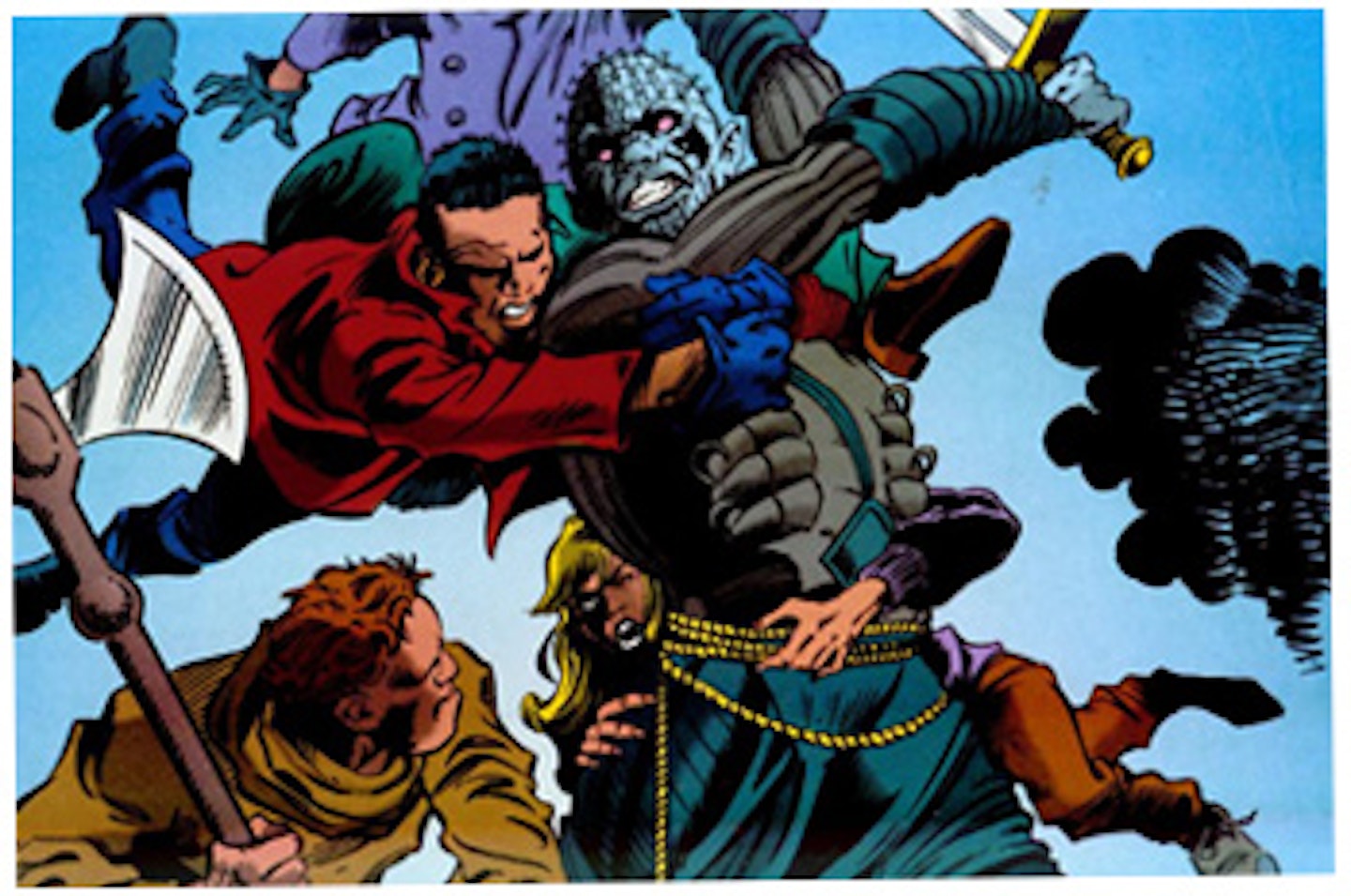
Boom claim their new series as the first time Clive Barker has returned to Hellraiser since his Hellbound Heart novella and the first film, but he does have story credit on this short-lived, multi-authored spin-off. The expanded mythology which set up Hell as series of grey corridors, and the cenobites as in thrall to a geometric shape called Leviathan, all comes from Hellbound: Hellraiser II, which gave Barker a polite executive producer credit but came mostly from the minds of screenwriter Peter Atkins and director Tony Randel. The Harrowing then, was Barker returning to the toybox that others had been adding to in his absence, and involves the titular brigade of Hell-escapees, whose mission is to go back in and liberate others. The mini-series was subtitled, ahem, Raiders of the Abyss. Marvel legend Gene Colan did the pencils.
Words and pictures by: DG Chichester and Paul Johnson
Published in: Jihad #1-2 (1991)
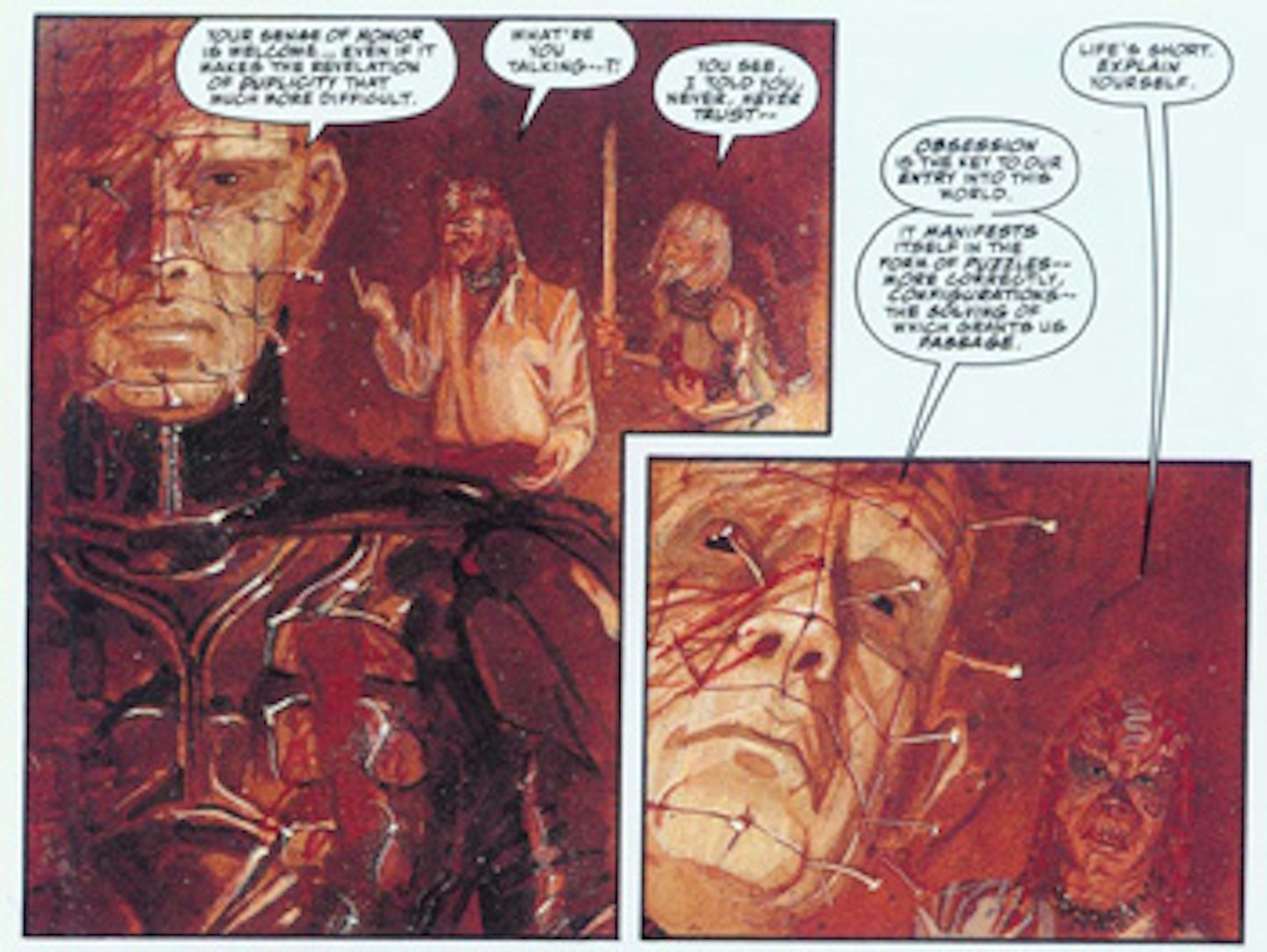
Following their success with Hellraiser, Epic picked up the rights to Barker's ambitious-but-compromised Nightbreed: an FX-make-up extravaganza intended as the horror genre's Star Wars, but ending up as its Magnificent Ambersons (although a less-butchered version did surface recently). Inevitable then that the two properties should meet, with the rather awkward premise of a holy war in which the cenobites stand for order and the monsters of Midian (from Nightbreed and its novel source Cabal) represent chaos. The experiment was never repeated.
Words and pictures by: DG Chichester and various
Published in: Pinhead #1-6 (1993)
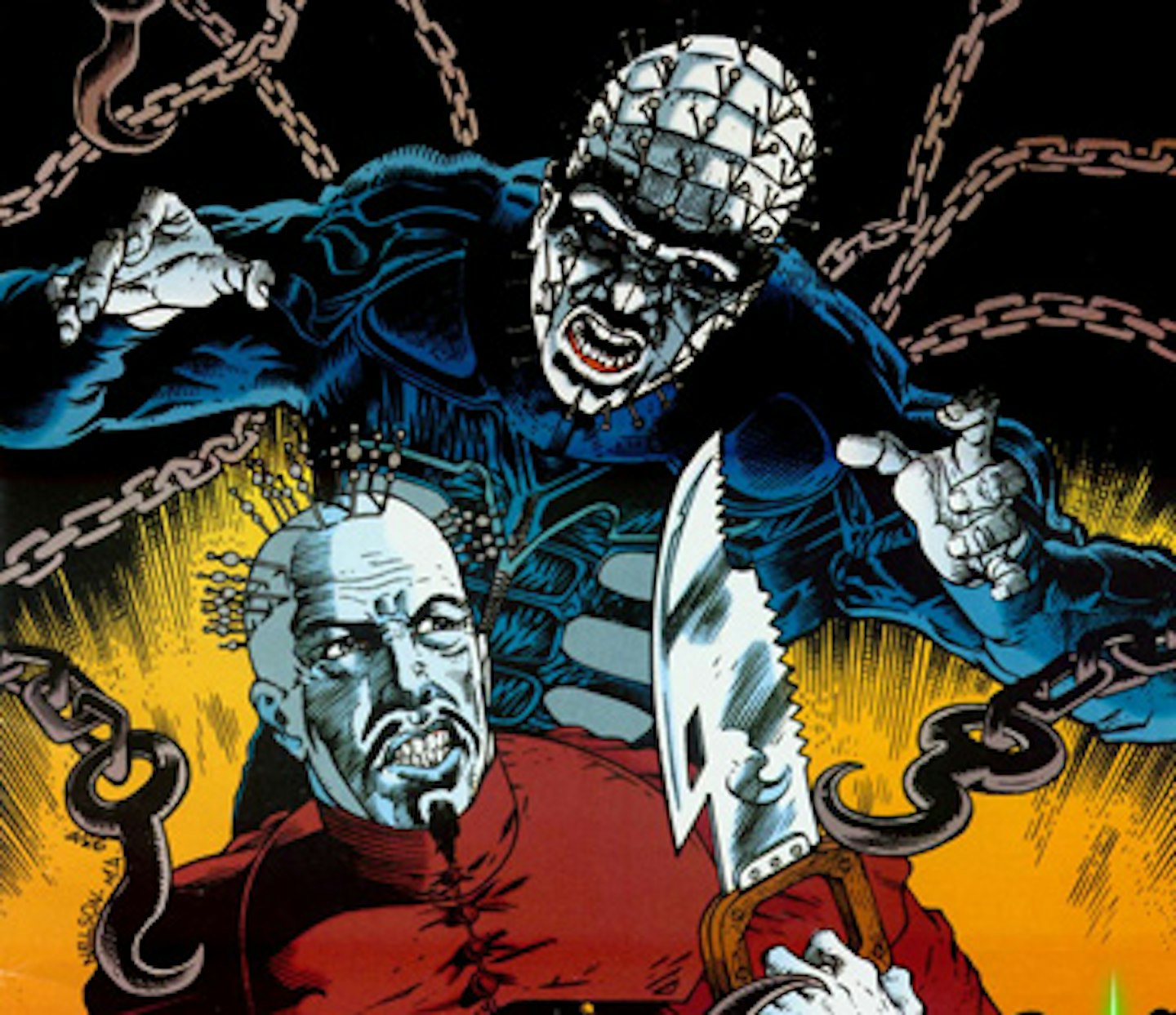
In 1993 Pinhead battled Toxic Comic's "costume killer" Marshal Law in the two-issue War in Hell, and received the full Marvel treatment, true believers, in this six-part epic charting a time travelling battle with his mighty foe Aggregate. Taking in the Wild West, the Incas, medieval Europe and a "Climactic Cro-magnon Clash!!!" there's fun to be had here, but we're now a *long *way off-message...
Title: Pursuit of the Flesh
Words and pictures by: Clive Barker, Christopher Monfette and Leonardo Manco
Published in: Hellraiser #1 (2011)
And so to the new series, turning its back on Marvel's later cartoon capers and returning the franchise to its creator. The first issue sees a jaded Pinhead lamenting his cenobite afterlife and looking to make a faustian bargain of his own. And we also pick up with the life of Kirsty Cotton, protagonist of the first two Hellraiser films (and a key player in Hellseeker, the actually-not-bad sixth). Oh, and it looks like The Harrowers will be involved...
(Right-click and save to your desktop)
Barker has been working on The Scarlet Gospels, a meeting of the Hellraiser mythos and his frequent protagonist Harry D'Amour (played by Scott Bakula in Lord of Illusion) for years, and the Drive Angry writer/director team of Patrick Lussier and Todd Farmer are working on a Hellraiser reboot. Plenty for the faithful to look forward to then, but if Hellraiser teaches us anything, it's that you should be careful what you wish for.
